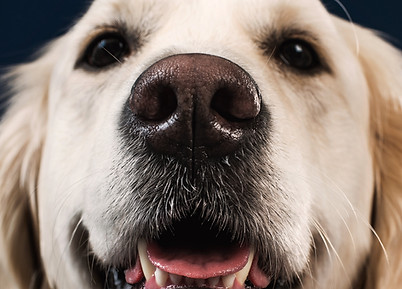Dauphin Vet Clinic
1801 Main Street South, Dauphin MB
Monday to Friday 8:30am - 5:00pm
(204) 638-3044
Ste Rose Vet Clinic
15 Tucker Street, Ste Rose du Lac MB
Monday to Friday 8:30am - 5:00pm
(204) 447-2701

Pet Dental Health Frequently Asked Questions
How often do pets need their teeth examined by a vet?

Your pet’s teeth should be checked at least once a year by a veterinarian or sooner if your pet develops any of the following:
-
Bad breath
-
Broken or loose teeth
-
Extra teeth or retained baby teeth
-
Discoloured teeth (yellow, brown, black)
-
Abnormal chewing, drooling, or dropping food
-
Reduced appetite or refusal to eat
-
Pain in or around the mouth
-
Bleeding from the mouth
-
Swelling in the areas surrounding the mouth
-
Chronic ear infections
I can't commit to brushing my pet's teeth daily. What else can I do to keep their teeth healthy?
We understand that it is not possible for everyone to brush their pet's teeth every day. Some things you can do instead:
-
Feed a diet specifically formulated for dental health
-
Ditch the brush. Enzymatic toothpaste just needs to touch the teeth, scrubbing is not required.
-
If you can't get your pet to take a toothbrush & toothpaste, try a cleansing gel.
-
Save your fingers and use a dental water additive
-
Incorporate annual cleanings into your pet's health care plan
Combine any of the above with regular veterinary exams for optimal dental health.

Can't I just give my dogs dental treats?

You can make dental health more fun by giving dental treats and toys in addition to regular check ups. Remember these treats will add calories, so adjust your pet's meal sizes accordingly.
*A rule of thumb for toys: If you can’t bend it easily with your hands, it’s too hard for your pet to chew!!
Is it true that certain breeds are more susceptible to dental issues?
All animals need dental care but small dogs, toy breeds, and cats are notorious for having dental issues.
-
They chew less
-
They live longer
-
Their teeth have shorter roots
-
Their mouths are smaller so their teeth are more crowded.
Many have a genetic predisposition to dental problems so small dogs, toy breeds, and cats should have their first detal cleaning on their first birthday and regularly throughout their lifetime.

What is the difference between plaque, tarter, and dental disease?

As your dog or cat eats, various mineral salts, organic material and food particles builds up on teeth.
-
At first the material is soft which we call plaque.
-
If left on the teeth, plaque hardens and sticks to the teeth. This is tartar.
-
Tarter builds up and irritates the gums and they retreat in fear ("recedes" if you want to get technical)
-
The breath becomes very smelly.
-
Teeth start to wiggle
-
The mouth gets infected which can spread to the throat, and into the blood stream causing heart, kidney and liver issues.
-
This is dental disease.
What kind of toothbrush should I use?
A soft round bristle, flat head toothbrush that fits comfortably in your pet's mouth. A infant finger toothbrush can work well too.




